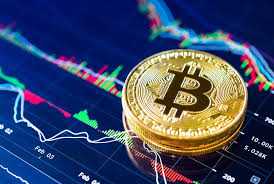
The World of Crypto Trading High-Frequency
In the rapidly evolving landscape of finance, Crypto Trading High-Frequency visit website high-frequency trading (HFT) has emerged as a dominant force, particularly within the domain of cryptocurrency. With the advent of blockchain technology and cryptocurrency markets, traders are continually seeking innovative ways to maximize profits. This is where HFT plays a pivotal role, enabling traders to execute a large number of orders at extremely high speeds.
Understanding High-Frequency Trading
High-Frequency Trading leverages sophisticated algorithms and high-speed data networks to execute trades in fractions of a second. Unlike traditional trading strategies that may involve human decision-making and longer transaction times, HFT utilizes automated systems to capitalize on fleeting market opportunities. The key advantage of HFT is its ability to exploit very short-lived market inefficiencies, often leading to substantial profits.
How Does HFT Work in Cryptocurrency Markets?
In the context of cryptocurrency, HFT involves using algorithms to analyze multiple markets and execute trades based on specific criteria. Given the extreme volatility of cryptocurrencies, HFT strategies can lead to lucrative outcomes if executed correctly. Traders rely on real-time data and powerful computational tools to make split-second decisions, often resulting in thousands of trades occurring in a single day.
Key Strategies in High-Frequency Trading
Several strategies are commonly employed by high-frequency traders in cryptocurrency markets. These include market making, statistical arbitrage, and momentum trading. Each strategy comes with its own set of benefits and risks:
- Market Making: This strategy involves providing liquidity to the market by placing both buy and sell orders. Market makers take advantage of the bid-ask spread, profiting from the difference between the buying and selling price.
- Statistical Arbitrage: Traders utilizing this strategy look for price discrepancies between correlated assets. By simultaneously buying and selling these assets, they aim to capture small price movements.
- Momentum Trading: This approach capitalizes on trends in the market. High-frequency traders will identify upward or downward trends and execute trades to ride these movements for profit.
The Role of Technology in HFT

Technology is the backbone of high-frequency trading. Advanced algorithms, high-speed internet connections, and powerful servers are crucial for success in this field. In cryptocurrency trading, where market dynamics can change in an instant, traders require tools that can process data and execute orders almost instantaneously. Moreover, many HFT firms operate their own data centers close to cryptocurrency exchanges to minimize latency, further enhancing their trading capabilities.
Regulatory Considerations
As HFT continues to grow in popularity, regulatory bodies are increasingly scrutinizing these trading practices. Issues such as market manipulation, liquidity concerns, and the volatility caused by HFT strategies are under examination. In the cryptocurrency space, where regulations are still developing, traders must remain vigilant about compliance and ethical trading practices.
Risks of High-Frequency Trading
Despite its potential for profit, high-frequency trading is not without risks. The reliance on algorithms means that any flaws in the code can lead to significant financial losses. Additionally, market conditions can change rapidly, and strategies that worked in the past may not be effective in the future. Finally, the competition among HFT firms is intense, with many fighting for the same market inefficiencies, which can drive down potential profits.
The Future of High-Frequency Trading in Crypto
The future of high-frequency trading in the cryptocurrency market appears promising, driven by advancements in technology and the increasing popularity of digital assets. As more institutional investors enter the crypto space, the demand for sophisticated trading strategies will likely increase. Furthermore, innovations such as artificial intelligence and machine learning could revolutionize HFT, allowing for more refined and effective trading strategies.
Conclusion
High-frequency trading represents a critical aspect of modern cryptocurrency trading, enabling traders to harness technology for rapid and strategic decision-making. While it offers substantial opportunities for profit, traders must remain aware of the associated risks and the evolving regulatory landscape. As the cryptocurrency market continues to mature, high-frequency trading will play an increasingly important role in shaping the future of finance.

